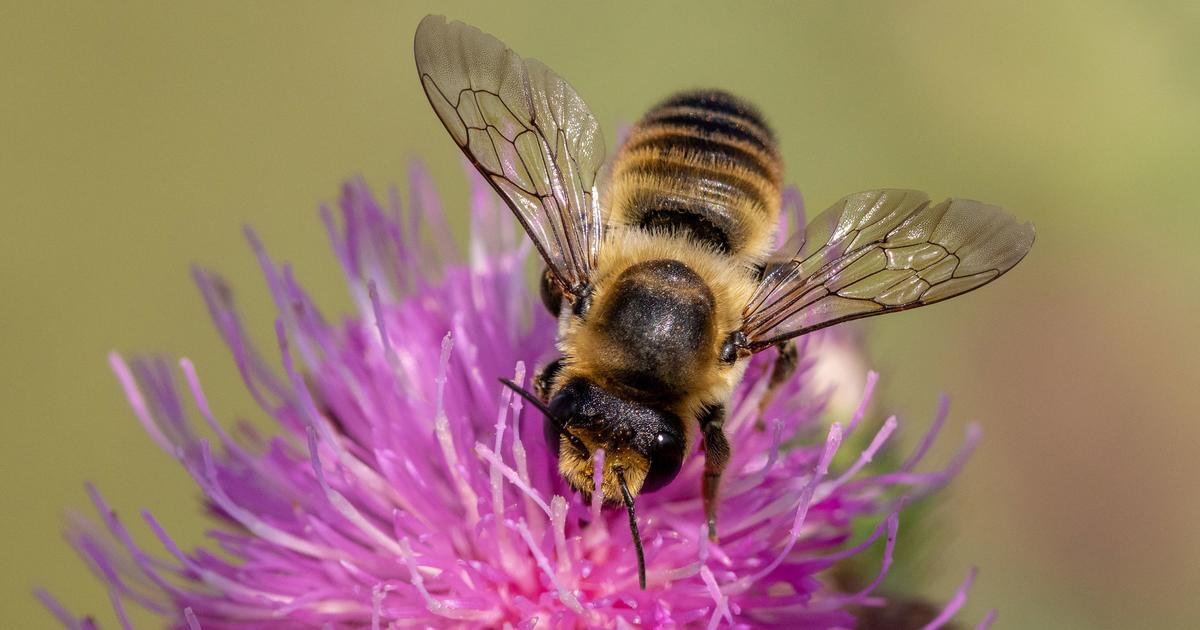Today there are a multitude of species of bees.
Each has its own particularities, but they remain recognizable by their three pairs of legs, their two pairs of wings and their mouth equipped with mandibles.
To discover
What to plant, sow or harvest in March?
The black bee
The black bee.
The
black bee
(
Apis mellifera
) is the most widespread species in France because it easily acclimatizes to all regions and different temperatures, whatever the season.
It also bears the names European or domestic bee and honey fly, given that it is honey-producing and collects, using its proboscis, nectar from multiple flowers.
Its body, which does not exceed 19 millimeters in length, has stripes at the abdomen and is black or very dark brown in color, hence its name.
Good to know
It is considered harmless, with the exception of a threat to their habitat.
The carpenter bee
The carpenter bee.
The
carpenter bee
(
Xylocopa violacea
) is recognizable by its shiny black, hairy body of about three centimeters and its two pairs of wings of about five centimeters.
With its navy blue or dark purple hues, it is considered the largest bee species in the wild.
This pollinating insect, visible between the end of spring and the beginning of summer, actually provides help to the gardener, even if it does not produce honey.
Good to know
It only stings to defend itself or its home.
The osmia bee
The osmia bee.
The
osmia bee
(
Osmia Cornuta
) or mason bee settles most of the time in urban areas in European countries with the arrival of spring.
It is a bee that is both solitary and discreet and does not produce honey but participates in pollination.
It does not form a hive but on the other hand settles wherever it can (woodwork, walls, etc.).
Measuring up to 1.5 centimeters long, it is distinguished by black hair on the head and thorax and a hairy abdomen with orange and black stripes.
Small feature to differentiate the two sexes.
The female has two horns on the forehead, while the male has a white fleece on the face and mandibles.
It almost never stings.
Also readWhy install a beehive in your garden?
The Caucasian or Russian bee
The Caucasian or Russian bee.
As its name suggests, the
Caucasian bee
(
Apis mellifera caucasica
) or gray bee is native to the Caucasus.
Its body is both gray and hairy and the back of its head is yellow.
A pollinating insect and maker of honey, wax and propolis, it is known for its long tongue.
Also read: 5 honey-producing flowers to promote pollination
The Buckfast Bee
The Buckfast Bee.
Also called Brother Adam, the
Buckfast bee
(Apis mellifera),
resulting from crosses between Italian species and black bees.
Domesticated, it proves to be both productive, gentle and resistant.
Being a hybrid, it varies in size and color.
However, the queen is distinguished with yellow stripes, while the worker is a grayish color and light yellow stripes.
Its long tongue allows it to collect nectar from flowers.

